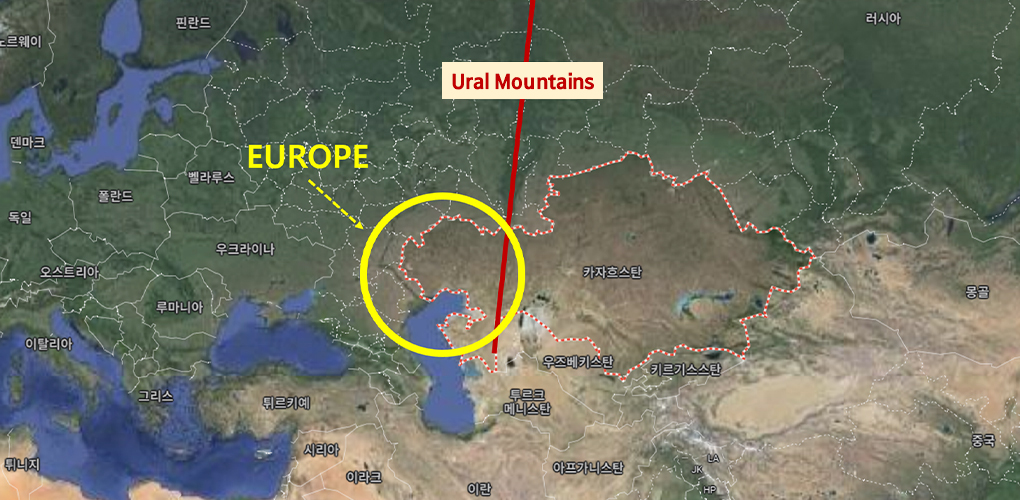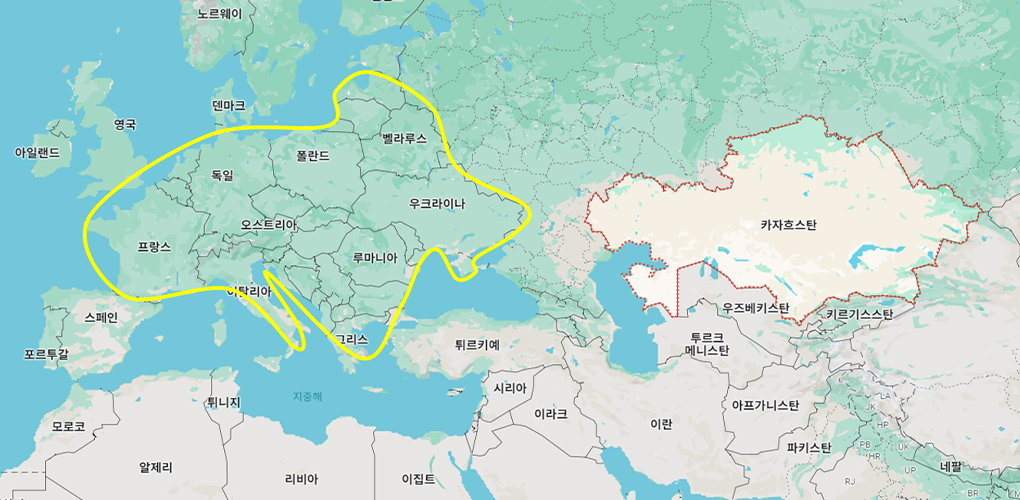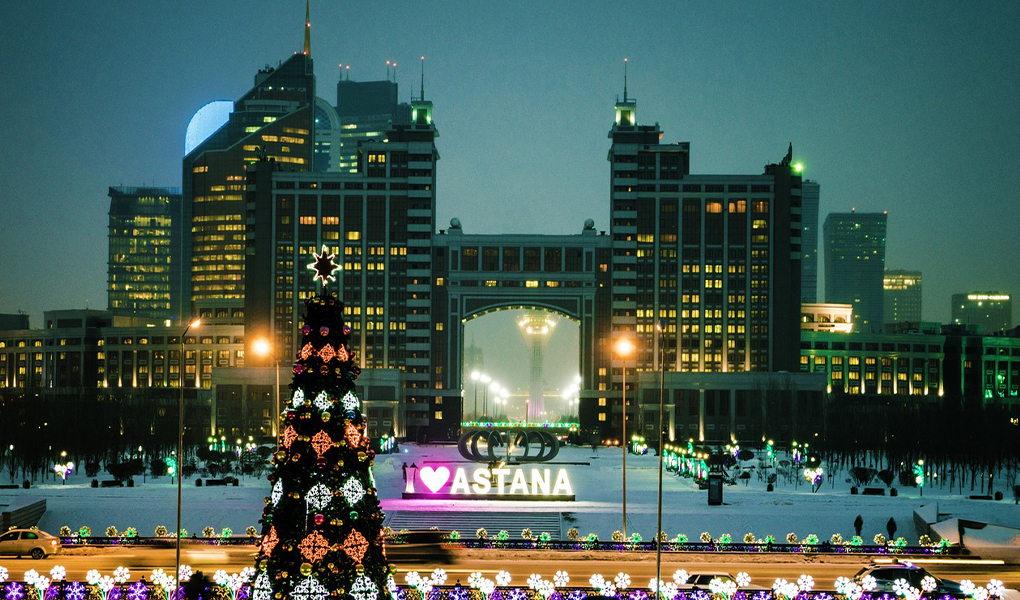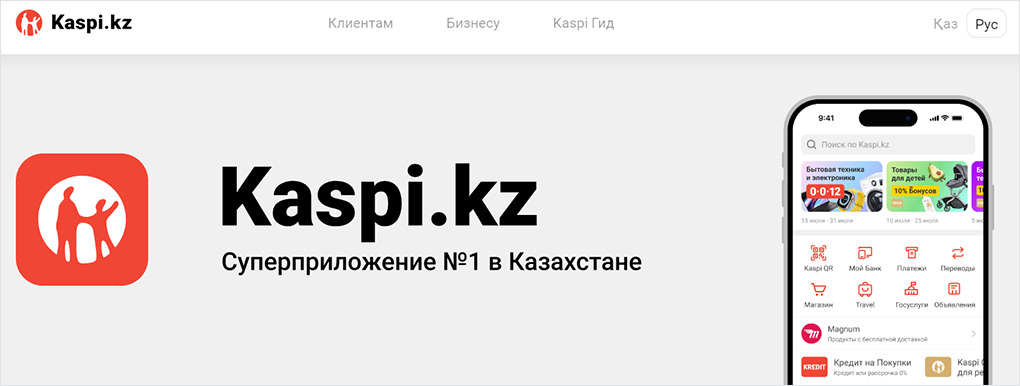

-
-
- 메일 공유
-
https://stories.amorepacific.com/en/amorestories-europe-or-asia-the-heart-of-eurasia-kazakhstan
Europe or Asia? The Heart of Eurasia, Kazakhstan
Once Dreamt-of Unexplored Countries #1

Columnist
Shim Sung-tae New Market Business 2 Team

#INTRO
Greetings. I am Shim Sung-tae from the New Market Business 2 Team. I am tasked with penning columns about various nations worldwide, particularly those uncharted territories we’ve always wanted to visit at least once. This column marks the beginning of our journey into countries that have been somewhat inaccessible but have always piqued our curiosity. Our first destination is the surprisingly affluent nation of Kazakhstan, a colossus in Central Asia and the heart of Eurasia.
1 Kazakhstan

Source: Unsplash
What comes to mind when you think of Kazakhstan? It remains an enigmatic, unfamiliar, and mysterious land to many Koreans. Not many Koreans have strong feelings about Kazakhstan, primarily due to a lack of exposure or interest compared to neighboring countries like China and Japan, which offer more accessible topics of
conversation and travel destinations. Consequently, many friends and acquaintances hesitate to answer whether Kazakhstan is in Europe or Asia.
Most responses are guesses, such as “Seems like Asia?” or “Isn’t that the country with beautiful women?” followed by a quick check on a map app.
Here’s an interesting fact for you. Are you a fan of football?

Kazakhstan is a curious case in the world of sports; while it participates in Asian leagues for basketball and other sports, it is uniquely a member of Union of European Football Associations since 2002. This implies that until 2001, it was part of the AFC. It’s been quite some time, but Kazakhstan competed against South Korea in the final qualifiers for the 1998 France World Cup. A notable match occurred in Almaty, Kazakhstan’s largest city, on October 4, 1997. It began with a goal from “Kazakhstan Killer” Choi Yong-soo but ended in a 1-1 draw.

Geographically, parts of Kazakhstan lie in Eastern Europe. The boundary dividing Europe and Asia is marked by a line connecting the Ural and Caucasus Mountains, cutting across Kazakhstan. Thus, like Turkey and Russia, Kazakhstan’s territory spans both the Asian and European continents. Kazakhstan has a significant population from Germany and other European countries. Moreover, it has been a melting pot of various ethnicities, including Persians, Turks, and Russians, from ancient times. Today, it is home to over 130 ethnic minorities.
2 How Vast is It?
Kazakhstan, meaning the land of wanderers, was historically a nation of nomads.
Astonishingly, Kazakhstan ranks as the ninth-largest country in the world. Its territory spans 2,724,900 square kilometers, approximately 27 times the size of South Korea and about 13 times the size of the Korean peninsula. At first glance, its shape and magnitude almost seem like a direct ‘copy-paste’ of Europe. Even if you combine Ukraine, France, Germany, Spain, and Poland – the largest countries in Europe – their total area would still fall short at 2,330,625 square kilometers, underscoring Kazakhstan’s immense size.
※ ‘Stan’ is a Persian term meaning land, region, or country. Globally, seven countries are using the ‘-stan’ suffix (Kazakhstan, Uzbekistan, Kyrgyzstan, Turkmenistan, and Tajikistan among the Central Asian nations, and Pakistan and Afghanistan in South West Asia).

Kazakhstan and the European continent. Kazakhstan’s territory is expansive at a glance.
This vast expanse is rich in countless resources, including oil and gas, and has historically been at the heart of the Silk Road. Today, it’s anticipated that Kazakhstan’s value will only increase as it lies on the route of the Trans-China Railway (TCR) and the Western Europe-Western China Expressway (WEWC), connecting China with Europe.
Despite its large land area, its population is relatively sparse, with 19.83 million residents as of 2024. The population density is low, with ethnic Kazakhs making up 68%, Russians 19%, Uzbeks 3%, Ukrainians 1.5%, Germans 1.0%, and other minority groups.
3 Kazakhstan and Its Neighbors
Let’s briefly delve into this subject for those curious about Kazakhstan’s relationships with its neighboring countries. Kazakhstan shares an extensive 6,500km border with Russia. To understand how long this is, consider that the vertical length of the Korean Peninsula, from Marado Island in the south to Hamgyeongbuk-do Province in the north, is 1,110km. This means the distance between the Kazakhstan and Russia border is equivalent to traversing the peninsula’s length repeatedly three times. This region benefits from a lack of significant mountain ranges, which historically allowed nomads to move freely between the Kazakh steppes and the steppes of southern Russia. This geographical advantage has fostered a close connection between the two countries from ancient times.

Source: Unsplash
Today, Kazakhstan remains closely allied with Russia within the Commonwealth of Independent States (CIS), a coalition formed by the ten republics that constituted the Soviet Union. The CIS currently comprises nine countries, including Russia, Belarus, Kazakhstan, Uzbekistan, and Azerbaijan.
Since gaining independence in 1991, Kazakhstan has transitioned from its former communist system to embrace a capitalist market economy. It has also made concerted efforts to forge connections with the Western world, including the United States and Europe. Additionally, the country looks to South Korea, the United Kingdom, and the UAE as models for economic rejuvenation.
Yet, the relationship with Russia retains some of its effectiveness. In response to the European Union (EU), Russia, alongside Kazakhstan, Belarus, Kyrgyzstan, and Armenia, founded the Eurasian Economic Union (EAEU) in January 2015. The EAEU facilitates the free movement of goods, capital, labor, and services, applying zero tariffs among member countries. An interesting note is that, as the Russia-Ukraine war enters its third year, Kazakhstan’s economy is reportedly experiencing rapid growth. According to data from KOTRA, while South Korea’s exports to Russia saw a 35.7% decrease in the initial eight months following the outbreak of the war in 2022, Kazakhstan’s exports increased by 104.5%, and Uzbekistan’s by 21.4%.
※ 'Eurasia’ refers to the combined continental landmass of Europe and Asia, accounting for about 40% of the Earth’s land area. While physically interconnected, the two continents are distinguished based on ethnic, religious, and cultural differences.
4 Surprisingly Prosperous: Kazakhstan
Kazakhstan is far more prosperous than many might assume. Almaty, its “economic capital,” is not only Kazakhstan’s jewel but also the quintessential metropolis of Central Asia. It was the nation’s capital from 1925 until 1994 (Astana is the current capital). Its elevation at 800 meters above sea level provides a pleasantly cool climate, making it an ideal place to live. The city is also well-suited for winter sports, having hosted the Winter Asian Games 2011. During this event, which saw participation from 27 countries, South Korea garnered 38 medals, finishing third overall (behind Kazakhstan and Japan, with China in fourth place).
Visiting Almaty can be a revelation, with its impressive buildings and numerous luxury cars cruising the streets. According to various statistics, Kazakhstan ranks among the higher-income countries in Central Asia. In terms of Purchasing Power Parity (PPP), the Gross National Income (GNI) per capita in 2021 was $41,800 for South Korea and $26,200 for Kazakhstan, with projections for 2023 estimating it at $32,688 (according to data from the National Statistics Portal KOSIS). Surprising, isn’t it?

Source: Kaspi.kz
Moreover, Kazakhstan is advanced in online services. Notably, Kaspi, a leading fintech company in Kazakhstan, offers a range of convenient user experiences, including standard financial services, online shopping, QR code payments, money transfers, and 3-hour delivery. Peer-to-peer transactions are also notably straightforward, making them very popular among the younger generations.
Competition in the digital market includes Russian entities like Ozon and Wildberries, and the use of Instagram as a marketing tool is as prevalent here as in other countries. Notably, Kaspi is the first Kazakhstani company to apply for an IPO in the United States.
5 Kazakhstan’s Beauty Market
Lastly, let’s delve into the beauty market of Kazakhstan, Central Asia’s mecca. As of 2022, Kazakhstan’s beauty and personal care (B&P) market is valued at approximately 2.2 trillion KRW, mirroring Norway’s market size (according to Euromonitor and Statista data). Considering the EAEU tariff-free market (Russia at 14.9 trillion, Kazakhstan at 2.2 trillion, Belarus at 0.6 trillion, Kyrgyzstan at 0.4 trillion, and Armenia at 0.2 trillion), the total is around 18.3 trillion KRW (with South Korea’s B&P market at about 17 trillion KRW in 2022). Kazakh consumers prioritize skincare, and with rising income levels, they do not hesitate to spend on reputable brands known for their efficacy. Products that are quickly absorbed and sunscreens are particularly favored, and, as in other countries, trends are amplified through social media platforms like TikTok and Instagram. On Instagram, the ‘Reels’ feature is popular for uploading ‘Instagrammable’ content, while TikTok is dominated by natural video content, including before-and-after transformations. Digital campaigns and influencer marketing are pivotal communication tools, with brands that utilize them effectively gaining consistent attention.

Source: Beauty Mania Instagram
However, Kazakhstan has a weak manufacturing base and is highly dependent on global brands in the beauty industry. The surge of K-culture has significantly heightened interest in Korean brands within Kazakhstan. Leveraging this, brands like Huxley and Dr. Jart+ have successfully established themselves in the Kazakh market.
So, what platforms are central to play in Kazakhstan? Kazakhstan’s premium beauty retail can be segmented into three leading players: the two major beauty platforms, Beauty Mania and Mon Amie, and the Russian company Gold Apple.

Beauty Mania / Source: Beauty Mania Website

Mon Amie, Source: Yandex / Gold Apple, Source: Google
Beauty Mania is the traditional powerhouse, holding over half the market share with 37 stores (as of 2023), but Gold Apple is a formidable contender. Despite having only four physical stores, it’s proliferating in Kazakhstan, leveraging its strong presence and growth momentum in Russia. Additionally, the online app Kaspi is expanding its market share by offering a user experience centered on 3-hour delivery and easy payment options.

Source: smartengines.com
#OUTRO
The more you learn about Kazakhstan, the more enchanting and intriguing it becomes. Were you surprised by its unexpected facets? If this column has sparked an interest in visiting Kazakhstan, I couldn’t be prouder. It’s worth noting that a few of our Amorepacific brands have already begun to tap into the Kazakh market. Whether through direct entry into Kazakhstan or using neighboring countries for indirect entry, I look forward to Amorepacific’s success in this strong Central Asian contender, the heart of Eurasia.
In our next column, we’ll share the story of a country in Africa that isn’t quite like the rest of Africa – the Republic of South Africa, our next target market.
References & Interviews
“The Story of Kazakhstan, The Heart of Eurasia,” Jeon Seung-min, Dulnyouk
“The Land of Dangun: Kazakhstan,” Kim Jeong-min, Global Contents
“Salem Kazakhstan,” Cho Hyeong-yeol, G-WORLD
Global Cosmetics Focus Vol.06 Russia & Kazakhstan, August 2023
Interview with KOTRA Almaty Trade Center
-
Like
0 -
Recommend
0 -
Thumbs up
0 -
Supporting
0 -
Want follow-up article
0


